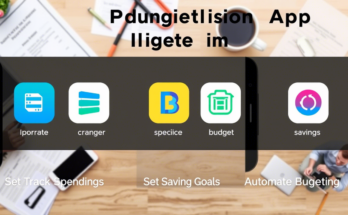Mastering your budget is more critical than ever in today’s fast-paced financial landscape. Whether you’re looking to take control of your finances or a business aiming to streamline operations, zero-based budgeting (ZBB) offers a fresh approach to managing money. Unlike traditional budgeting methods that rely on past spending patterns, ZBB starts from scratch each period, ensuring every dollar has a purpose. In this comprehensive guide, we’ll explore zero-based budgeting, its benefits, how to implement it effectively, and tips for optimizing your finances and SEO strategy.
What Is Zero-Based Budgeting?
Zero-based budgeting is a method where all expenses must be justified for each new period, starting from a “zero base.” This means no assumptions are carried over from previous budgets; every expense must align with specific goals or needs. The ultimate goal is to ensure that income minus expenses equals zero by the end of the budgeting period.
Key Features of Zero-Based Budgeting:
- Starts from Scratch : Every budget cycle begins anew without referencing prior periods.
- Justification Required : Each expense must have a clear rationale tied to objectives.
- Flexibility : Priorities can shift based on current circumstances rather than being locked into outdated allocations.
- Focus on Goals : Encourages alignment between spending and long-term financial goals.
Benefits of Zero-Based Budgeting
Implementing ZBB comes with numerous advantages, especially when done correctly:
1. Improved Financial Awareness
By requiring justification for every expenditure, ZBB forces individuals and businesses to evaluate their spending habits critically. This heightened awareness often leads to better decision-making and reduced wasteful spending.
2. Increased Accountability
With ZBB, there’s no room for ambiguity. Every dollar allocated must serve a defined purpose, fostering accountability and transparency in financial management.
3. Enhanced Resource Allocation
Rather than simply carrying forward old budgets, ZBB ensures resources are directed toward high-priority areas. For businesses, this could mean reallocating funds from underperforming departments to growth initiatives.
4. Cost Savings
One of ZBB’s most significant benefits is its potential to reduce costs. By scrutinizing every expense, unnecessary expenditures are eliminated, freeing up capital for savings or investment.
5. Goal-Oriented Approach
ZBB ties spending directly to strategic goals, whether paying off debt, saving for retirement, or expanding a business. This focus helps maintain momentum toward achieving these objectives.
How to Implement Zero-Based Budgeting
Transitioning to a zero-based budget requires careful planning and execution. Here’s a step-by-step guide to help you get started:
Step 1: Assess Your Income
Begin by calculating your total monthly income. Include all sources such as salary, freelance earnings, rental income, or side hustles. Knowing exactly how much money you have coming in sets the foundation for your budget.
Step 2: List All Expenses
Create a detailed list of your expenses, categorizing them into fixed (e.g., rent, utilities) and variable (e.g., groceries, entertainment) categories. Be thorough—don’t overlook small recurring charges like subscriptions.
Step 3: Assign Every Dollar a Purpose
Allocate every dollar of your income to either expenses, savings, or investments. If you finish assigning categories and still have leftover funds, consider adding them to emergency savings, retirement accounts, or other financial goals.
Step 4: Review and Adjust Regularly
Budgeting isn’t a one-time task. Revisit your budget regularly to account for income, expenses, or priorities changes. Flexibility is key to making ZBB work effectively.
Step 5: Track Spending Diligently
Monitor your monthly spending using spreadsheets, budgeting apps, or pen and paper. Staying disciplined will help you stick to your plan and identify areas for improvement.
Tips for Making Zero-Based Budgeting Work for You
While ZBB offers many benefits, it also demands commitment and discipline. Here are some practical tips to maximize its effectiveness:
1. Set Clear Goals
Define short- and long-term financial goals before creating your budget. These could range from building an emergency fund to buying a home. Having clear targets keeps you motivated.
2. Prioritize Needs Over Wants
Distinguish between essential expenses and discretionary spending. Focus on covering necessities first, then allocate remaining funds to non-essential items.
3. Automate Savings
To avoid the temptation of overspending, set up automatic transfers to savings or investment accounts. This ensures you consistently contribute to your financial goals.
4. Be Realistic
Don’t set overly restrictive limits that are impossible to follow. A realistic budget increases the likelihood of adherence and success.
5. Leverage Technology
Utilize budgeting apps like Mint, YNAB (You Need A Budget), or PocketGuard to simplify tracking and stay organized. Many apps offer features explicitly tailored for ZBB.
Optimizing Content Strategy for Maximum Impact
If you’re writing about zero-based budgeting for a blog or website, optimizing your content for search engines while providing value to readers is crucial. Below are strategies to enhance your article’s reach and engagement:
1. Keyword Research
Identify relevant keywords related to zero-based budgeting, such as “how to create a zero-based budget,” “benefits of zero-based budgeting,” and “zero-based budgeting examples.” Use tools like Google Keyword Planner or SEMrush to find high-volume, low-competition terms.
2. Engaging Headlines
Craft compelling headlines that grab attention and encourage clicks. Examples include “Master Your Finances with Zero-Based Budgeting” or “Why Zero-Based Budgeting Is the Ultimate Money Management Tool.”
3. Internal Linking
Link to other relevant articles on your site to keep readers engaged and improve SEO. For instance, link to posts about saving strategies, debt reduction, or financial planning.
4. Backlink Building
Reach out to authoritative websites in the Finance niche to secure backlinks to your article. Guest posting and collaborating with influencers can also boost your credibility and visibility.
5. Mobile Optimization
Ensure your content is mobile-friendly since many users access information via smartphones. Use responsive design and concise paragraphs for easy readability.
6. Call-to-Action (CTA)
Include CTAs throughout your article to guide readers toward desired actions, such as signing up for a newsletter, downloading a free budget template, or sharing the post on social media.
Meeting Adsense Eligibility Requirements
To monetize your content through Google AdSense, adhere to the following guidelines:
- Produce original, high-quality content free of plagiarism.
- Avoid prohibited topics like adult content, violence, or hate speech.
- Ensure proper grammar, spelling, and formatting.
- Maintain transparency about affiliate links or sponsored content.
By focusing on user experience and adhering to these policies, you increase your chances of approval and profitability.
Conclusion
Zero-based budgeting is a powerful tool for anyone seeking greater control over their finances. By starting from zero and allocating every dollar intentionally, you can eliminate waste, prioritize goals, and achieve financial stability. When crafting content around ZBB, remember to balance informative insights with SEO best practices to maximize reach and impact.
Ready to transform your financial future? Start implementing zero-based budgeting today and watch your savings grow!





7cmd5l